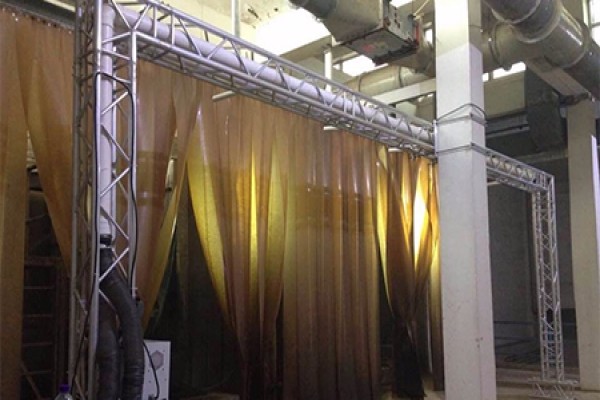Is there a cycle limitation for the use of deodorants in industrial wastewater treatment?
Small sewage treatment plants at the county level are widely distributed in China, and they are increasingly taking on greater responsibility for water environment protection. Exploring the outstanding operation of sewage treatment plants at the county level and using county towns to drive the construction and operation of rural sewage in surrounding villages and towns is an important way to solve the problem of sewage operation in county towns and townships.
Establish a regional sewage treatment plant management skills center in counties and cities with conditions. After the stable operation of the sewage treatment plant, there will be little change in the center's sewage treatment skills center, and regional common problems are more common. In order to reduce the overlapping cost of skilled personnel in sewage treatment plants and ensure their full workload, a regional sewage treatment center can be established to provide skill support for sewage treatment plants in a region.
In the early stages of construction, small sewage treatment plants often lack water or even operate without water. Small sewage treatment plants with severe rainwater and sewage confluence still have situations where the inflow concentration is far below the design standards. These situations can easily form a large cart in the sewage treatment plant, and the retention time of sewage in the plant is much longer than the design retention time.
Plant liquid deodorants are not restricted by temperature and other climatic conditions, and are not affected by temperature and environment, making them ineffective. They have strong weather resistance and can fully exert their deodorization effects in high temperatures (below 50 ℃) and high colds (above -15 ℃); Whether in humid or arid areas, its deodorization effect is not affected at all.

Plant deodorants are refined by extracting sterilization and deodorizing factors from plants using equipment and processes with completely independent intellectual property rights. No chemical substances added, no toxic side effects on human body or livestock, suitable for use. It has antibacterial, sterilization, and deodorizing effects, and has outstanding differentiation and removal effects on odors such as ammonia and hydrogen sulfide.
These two elements put pressure on the agile operation and management of small sewage treatment plants. Especially in the early stages of operation, there is a lack of corresponding skill reserves and a shortage of actual skilled personnel cultivation. In the middle stage of operation, there is a situation where the sewage treatment plant does not have the relevant skill strength to cope with full or even overloaded operation. The continuous aging and damage of the original equipment also increases the cost of maintenance in the plant, and the operating cost increases. The workload of the staff in the plant also increases sharply, which greatly increases the difficulty of operation and management, and the operating profit begins to decline.
At this moment, the difficulty of treatment is relatively simple. Factors such as longer residence time and excessive aeration can significantly reduce sewage pollutants and achieve better treatment effects. However, due to the fact that facilities and equipment have not been put into use for a long time, the failure rate is low, resulting in fewer staff inspections and maintenance within the factory.
County level sewage treatment plants are generally planned to have a daily treatment capacity of around 10000 to 30000 tons and below. In terms of operation and management, they can partially refer to the operation experience of mature large-scale sewage treatment plants. However, it is also necessary to clarify the characteristics of small-scale sewage treatment plants and carry out differentiated management. Today, we will analyze the operation characteristics of small-scale sewage treatment plants from their operation cycle.
Such skilled personnel are detached from the management within the factory, allowing for a more objective assessment of skill issues and providing more effective skill plans. The managers within the factory can also receive skill services at lower personnel costs, and together with skilled personnel, they can receive higher treatment and better living conditions. Their loyalty to the enterprise is also improved, leading to a win-win situation.
The article originates from a deodorant manufacturer http://www.scneng.com.hk
-
06-11
"Environmental Doctor" Du Siyuan: Environmental Protection is a Lifestyle Attitude
There is a Hong Kong compatriot in Jiangmen who often frequents various farms and plantations, walks in mechanical factories, and is seen by others as the nemesis of environmental problems. He conside
-
03-16
Deodorant manufacturer: Deodorants reduce soil pollution
Waste is a chaotic mixture of various components. The accumulation of debris on the surface of soil can cause some chemical reactions, releasing harmful gases, which can lead to soil pollution and eve
-
12-01
Deodorant Manufacturers: Differences between Microbial Deodorants and Traditional Deodorants
The waste that is not needed in our daily life and work is called waste. Due to the large amount of waste discharged and the complex categories, there are great difficulties in reducing waste and deod
-
11-08
Application of Deodorant Manufacturers in Domestic Waste Treatment
Garbage is the waste generated in everyone's daily life and work. Due to its large discharge volume and complex and diverse composition, it poses great difficulties in reducing and deodorizing wa
